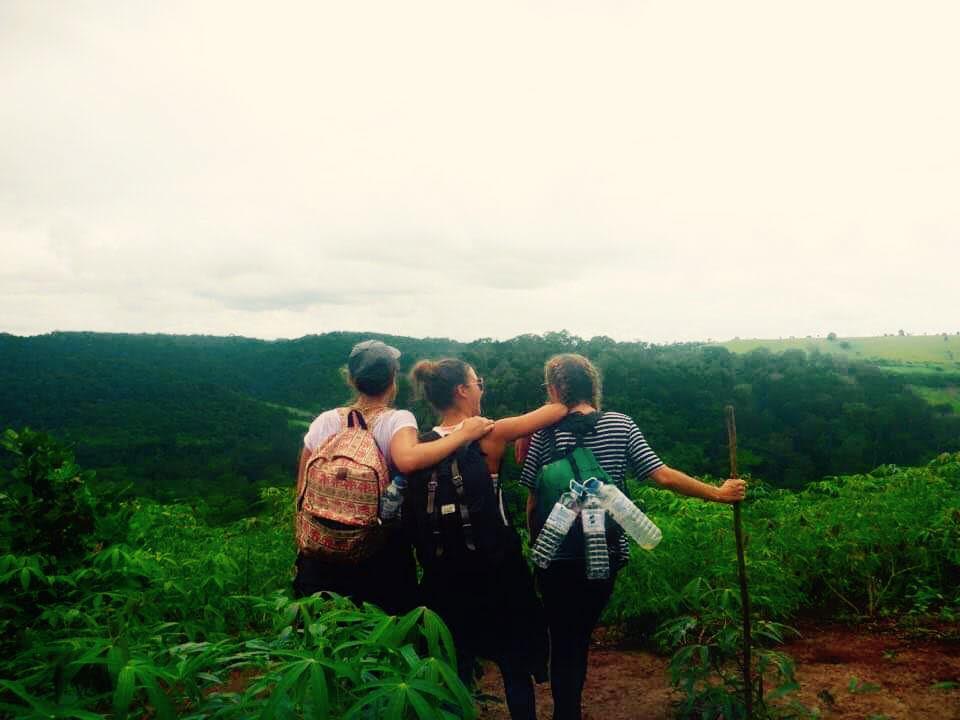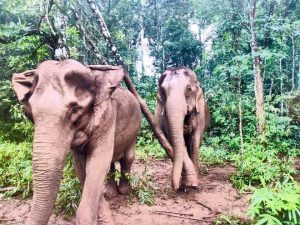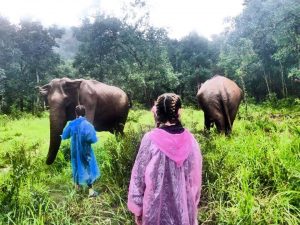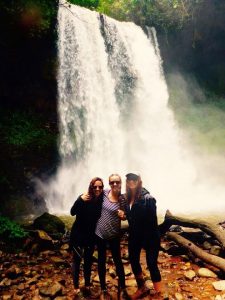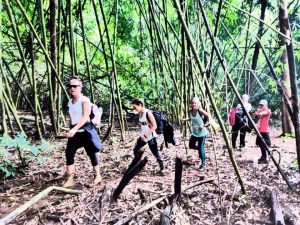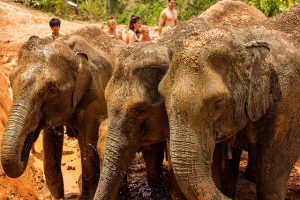
The Elephant Jungle Sanctuary in Chiang Mai was founded in July 2014 is a joint initiative between Chiang Mai locals and Karen hill tribe mahouts who were concerned about the welfare and conservation of elephants in Thailand. The sanctuary is an ethical and sustainable eco-tourism project designed to raise awareness and educate people about a proper elephant care and the plight of the Asian Elephant. The Sanctuary is comprised of 5 spacious locations (Mountain Village, Tranquil Valley, Paddy Field, Hilltop Paradise and Waterfall Grove Sanctuaries) and 30 formerly mistreated elephants. A visit to Elephant Jungle Sanctuary is an affordable alternative to visiting the more long-standing elephant conservation projects in Chiang Mai such as Patara Elephant Farm and Elephant Nature Park, which are also frequently fully booked. This is a great alternative for families too, as children under the age of 3 are permitted entry for free, whereas they would be charged by the other organizations.

Here’s what you can expect from a day at the Elephant Sanctuary:
Chiang Mai: Elephant Jungle Sanctuary’s Full Day Visit
You will be picked up from your hotel between 8:00-8:30am in the morning, and travel with fellow tour participants around 1.5 hours from Chiang Mai to the Karen village and Sanctuary. Breathe clear mountain air as you drive through the beautiful agricultural countryside of Northern Thailand, and get a glimpse of local life outside of the city. When you arrive at the Elephant Jungle Sanctuary around 10:30am, an English-speaking guide will walk with you through the adjacent Karen village, and teach you a little about elephants and the local way of life. Get changed into traditional Karen clothing, listen as your guide tells you more about the Sanctuary, grab some bananas and sugar cane for feeding, and you will be ready to meet the elephants. In small groups, you will meet and interact with each of the friendly elephants personally. Learn about elephant behavior, and discover the unique and interesting history of each elephant as you touch, play, feed, and photograph them. Once you have met and spent time with each of the elephants, you can retire to a relaxing platform overlooking a picturesque river and jungle. There, you will enjoy a delicious lunch of traditional Thai food and fresh fruit, before being re-united with your elephant friends. At this point during the day, you will walk alongside the elephants to a nearby river and join them for a bath in the refreshing water. Here, you will have the opportunity to bathe and brush the elephants while they enjoy wading through the water. Next, it will be time for a therapeutic mud spa. Feel free to get muddy as you cover the elephants in a protective layer of mud. Have fun playing with them and watch as they joyfully frolic in the mud spa. When it’s time to say goodbye to the elephants, you can take some final photos with them to preserve this precious memory, then head upstream and wash off your remaining mud, or relax with a swim in the fresh, clean water. Finally, you will change clothes and take a scenic walk back through the Karen village. You will then part ways with your local guide, and return to Chiang Mai, experiencing the drive through picturesque rural scenery in the pleasant glow of the afternoon sun. Return to your hotel between 5:00-5:30pm.
Please note: Today you will get wet when you help with the elephants’ bath. Please bring appropriate clothing for this, as well as a towel and change of clothes. We recommend you also bring a hat, sunscreen, walking shoes, bathing suit and towel.

Note: As always, we take pride in our standards for philanthropic travel and animal treatment when recommending any experiences to our guests touring in Southeast Asia. We only recommend experiences that we feel are beneficial to both the local people and animals. We hope that the increased attendance to genuine conservation programs will help encourage others to lift their standards.


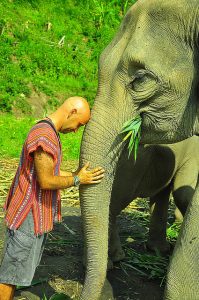
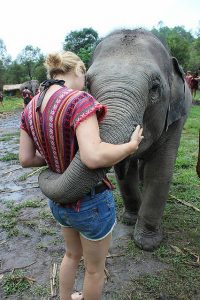 …
… 